Facebook Ad Examples That Convert in 2025
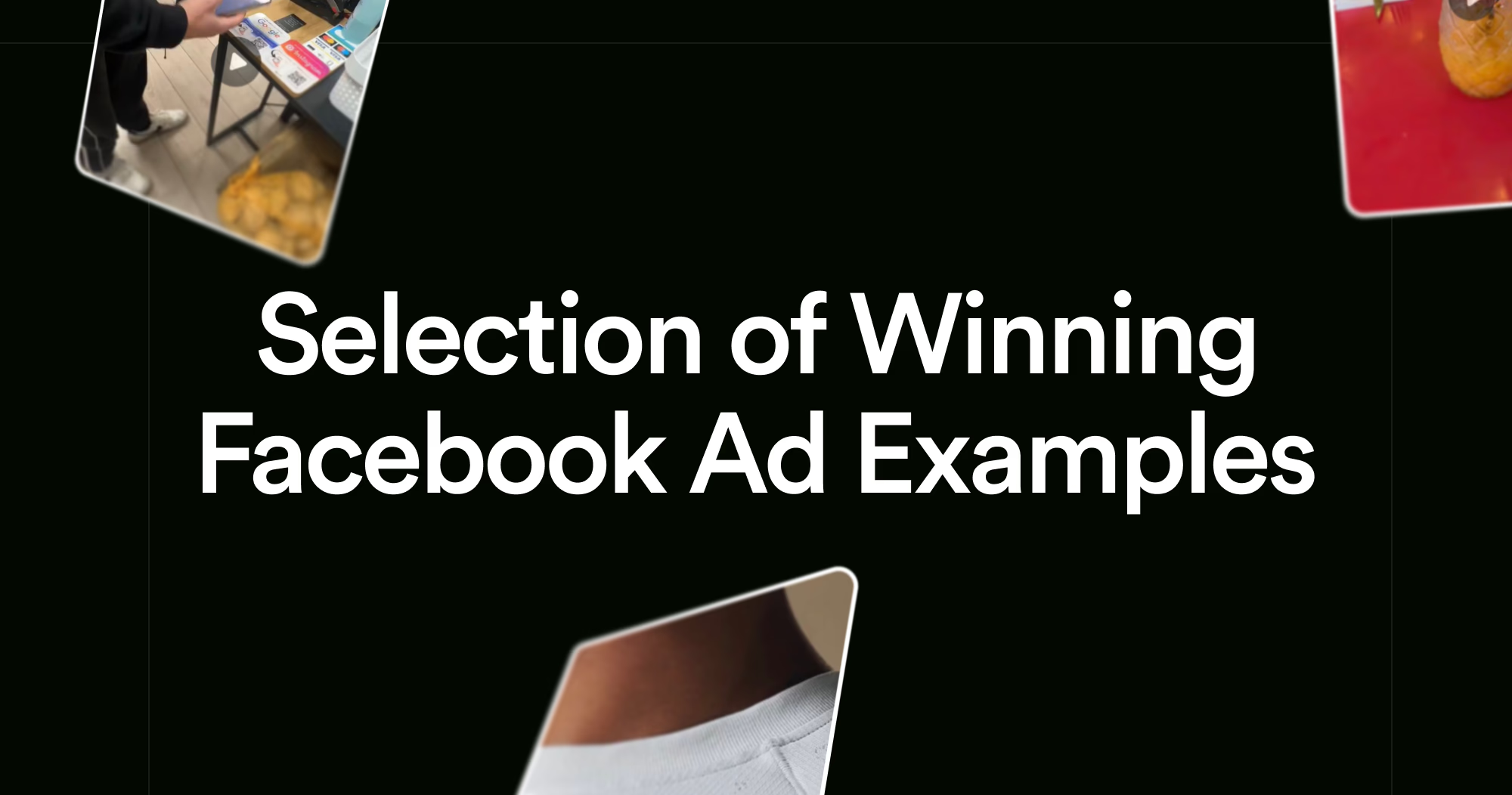
Most of the people think that Facebook is dead. Yet, brands winning big quietly run six-figure campaigns. The platform changed, and winners study proven ads instead of guessing.
Every active ad is a market test someone else funded. Ads running 30, 60, or 90 days later passed Facebook’s profitability filter.
When you spot repeatable patterns in live ads, you save months of trial and error. Professionals reverse-engineer proven winners, adapt frameworks, and scale what's already proven, not just clever ideas.
The anatomy of high-performing Facebook ads
High-performing Facebook ads have five core elements. Nail these and you engineer success without luck. You can use ad spy tools for this.
Hook
You have about 1.7 seconds to grab attention. Most users leave before two seconds. Use a provocative question, bold visual, or pattern interruption instead of safe product intros.
Strong hooks work because they create a scroll-stopping moment. The first frame of your video or the dominant element of your static image must be visually and emotionally jarring enough to break the doom scroll.
Examples that work:
- Bold contrarian statements like "Stop wasting time"

- Unexpected visuals: A product used in a surprising way
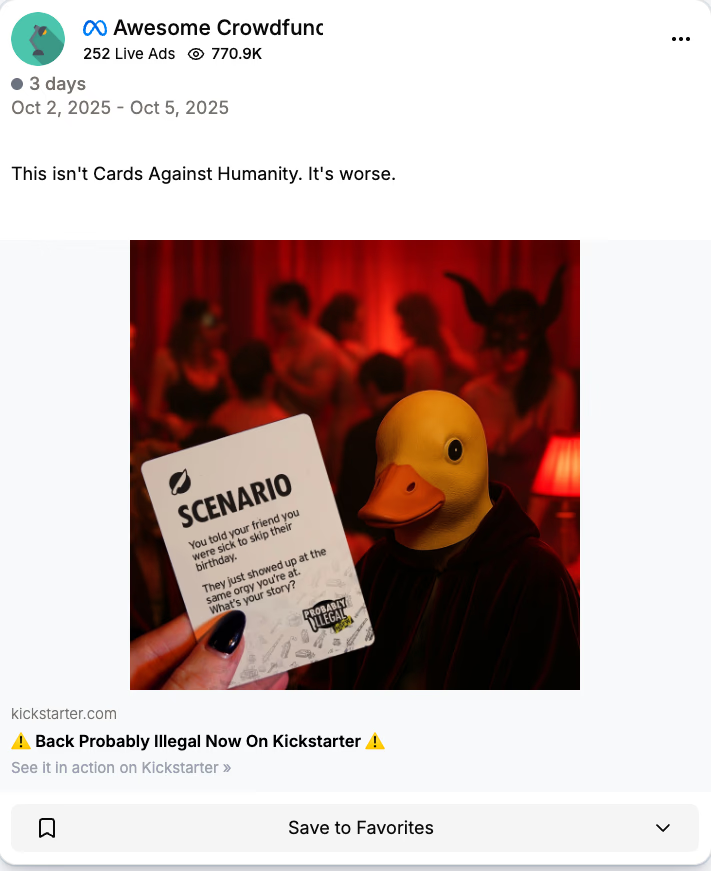
- Direct questions: "Still paying full price for [product]?"
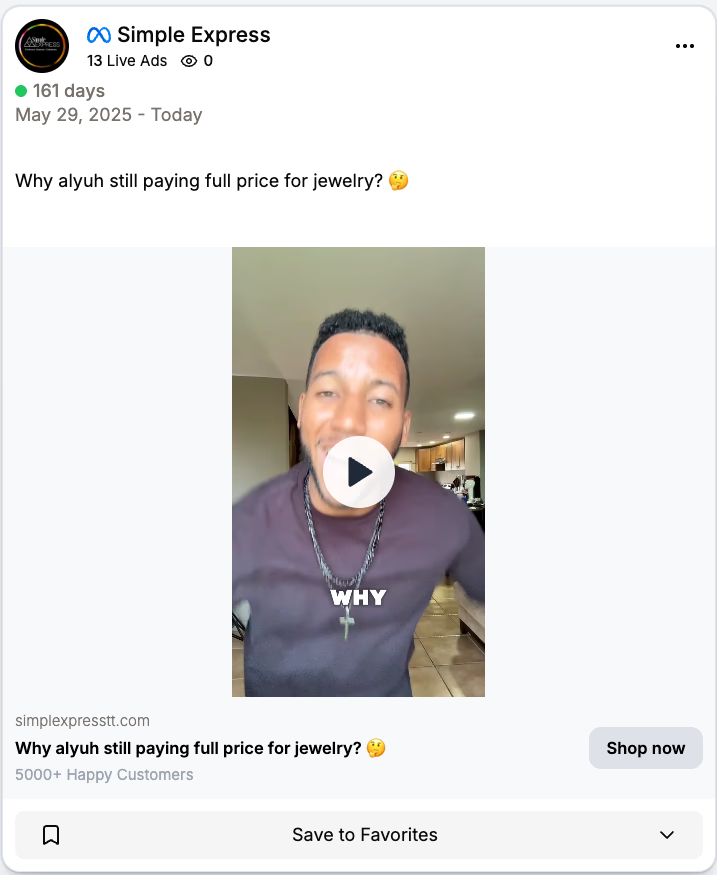
- Pattern interrupts: Rapid movement, loud colors, or text that fills the screen
Value proposition
This answers the hook. Show transformation, not just features. For example, "Water-resistant" is a feature. "Know what time it is while swimming" is the benefit that drives action. Frame this as a before-to-after bridge.
Your value proposition must connect the hook to a tangible outcome. Users don't buy specs. They buy the life improvement those specs enable. Position your product as the vehicle that moves them from their current frustration to their desired outcome.
The transformation formula:
- Current state (pain/problem)
- Your solution (the bridge)
- Future state (benefit/outcome)
Social proof
Use real customer photos, user-generated content, testimonials, or third-party validation to build trust. Marketing Experiments found real customer photos increased conversions by 35% compared to stock images.
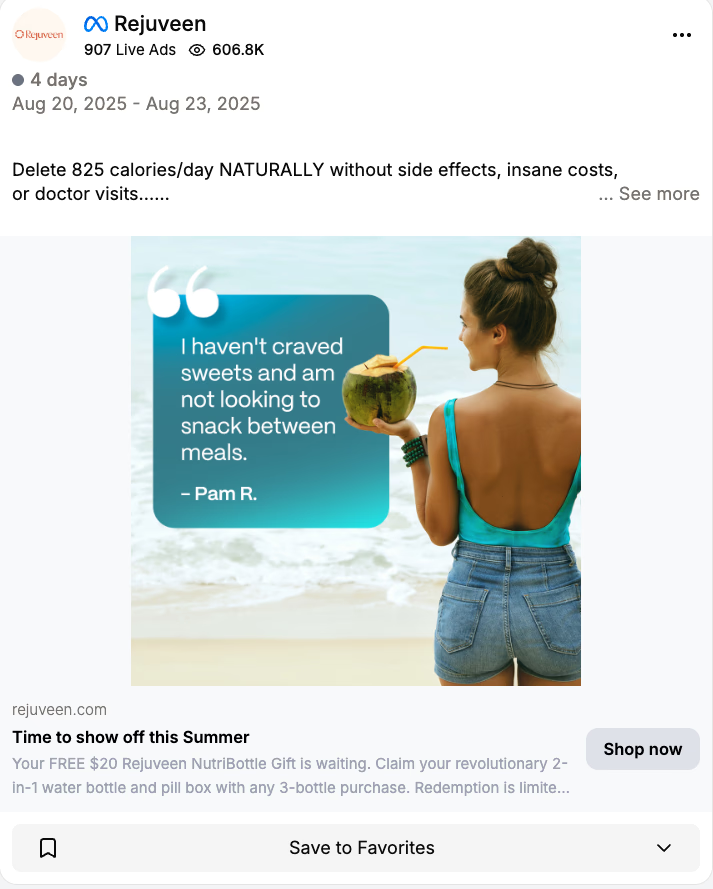
Social proof works because it shortcuts the trust-building process. When prospects see people like them using and enjoying your product, it reduces perceived risk. The more authentic and specific the proof, the stronger its impact.
Types of social proof that convert:
- Customer count: "Join 50,000+ users"
- Ratings and reviews: "4.8 stars from 2,341 reviews"
- User-generated photos and videos
- Press mentions and awards
- Before/after comparisons from real customers
- Influencer endorsements (authentic, not forced)
Creative format
Choose video, carousel, or static based on your story. Videos generate 270% more leads than static image. However, only if the first three seconds engage viewers. Carousels help sequence narratives, organic-looking images outperform polished studio shots for authenticity.
Format choice should match both your message complexity and audience behavior:
- Static images: Best for simple, impulse-driven offers (travel deals, flash sales, single-benefit products)
- Video: Ideal for demonstrations, storytelling, or explaining complex benefits (subscriptions, software, transformations)
- Carousel: Perfect for showcasing variety, telling sequential stories, or addressing multiple objections
The format amplifies or dilutes your message. A compelling story trapped in a static image underperforms. A simple price offer stretched into 60 seconds wastes attention.
Call-to-action
Be specific. Generic CTAs like Learn More underperform compared to direct commands like Start your free trial now. Adding urgency words like "today," "now," or "limited" encourages immediate action.
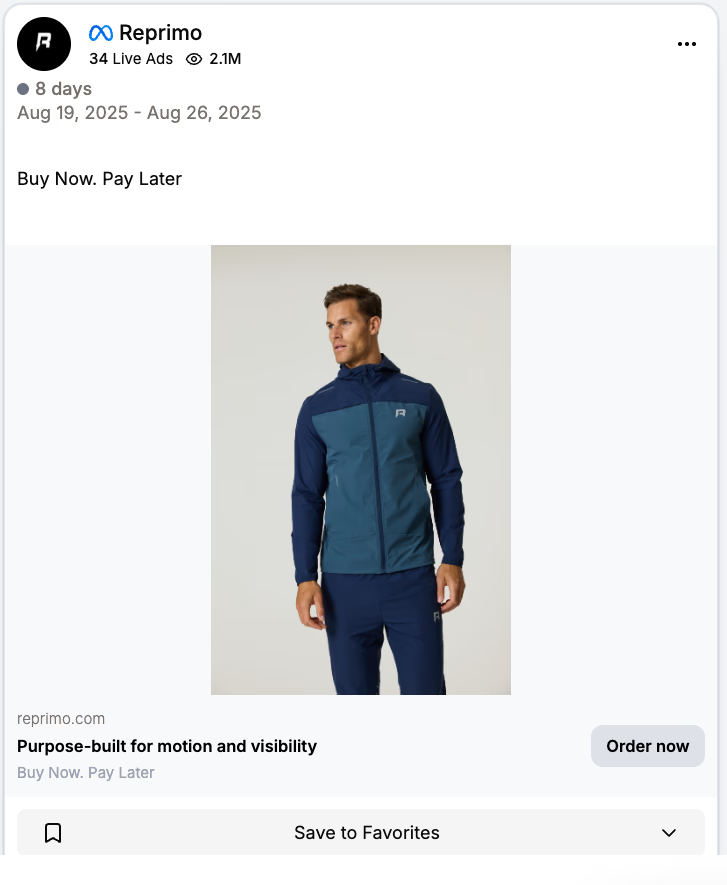
Your CTA removes decision friction by telling users exactly what happens next. Vague CTAs create hesitation; specific CTAs create momentum.
Effective CTA principles:
- Use action verbs: "Get," "Start," "Claim," "Join," "Book"
- Add urgency: "today," "now," "before midnight"
- Clarify value: "Start your 7-day free trial" beats "Sign up"
- Create scarcity: "Grab one of 47 spots left"
- Reduce risk: "Try free for 30 days—cancel anytime"
Make these elements fit what your audience wants and stop wasting ad budget. Also, avoid endless scrolling—design hooks that create real interruption and sustained curiosity.
When all five elements align with your audience's desires and platform behavior, your ads become reliably profitable. Not occasionally lucky.
Key metrics that separate winners from losers
Track these metrics closely to know which ads build your business.
Ad longevity
Ads running 30+ days passed Facebook’s profitability test. Ads that lose money get cut quickly.
Use longevity as your first filter when researching competitors because longevity proves real-world profitability over time. In Facebook's Ad Library, you can use filters for that. Anything active beyond 30 days deserves a closer look. Anything past 90 days is a proven winner.
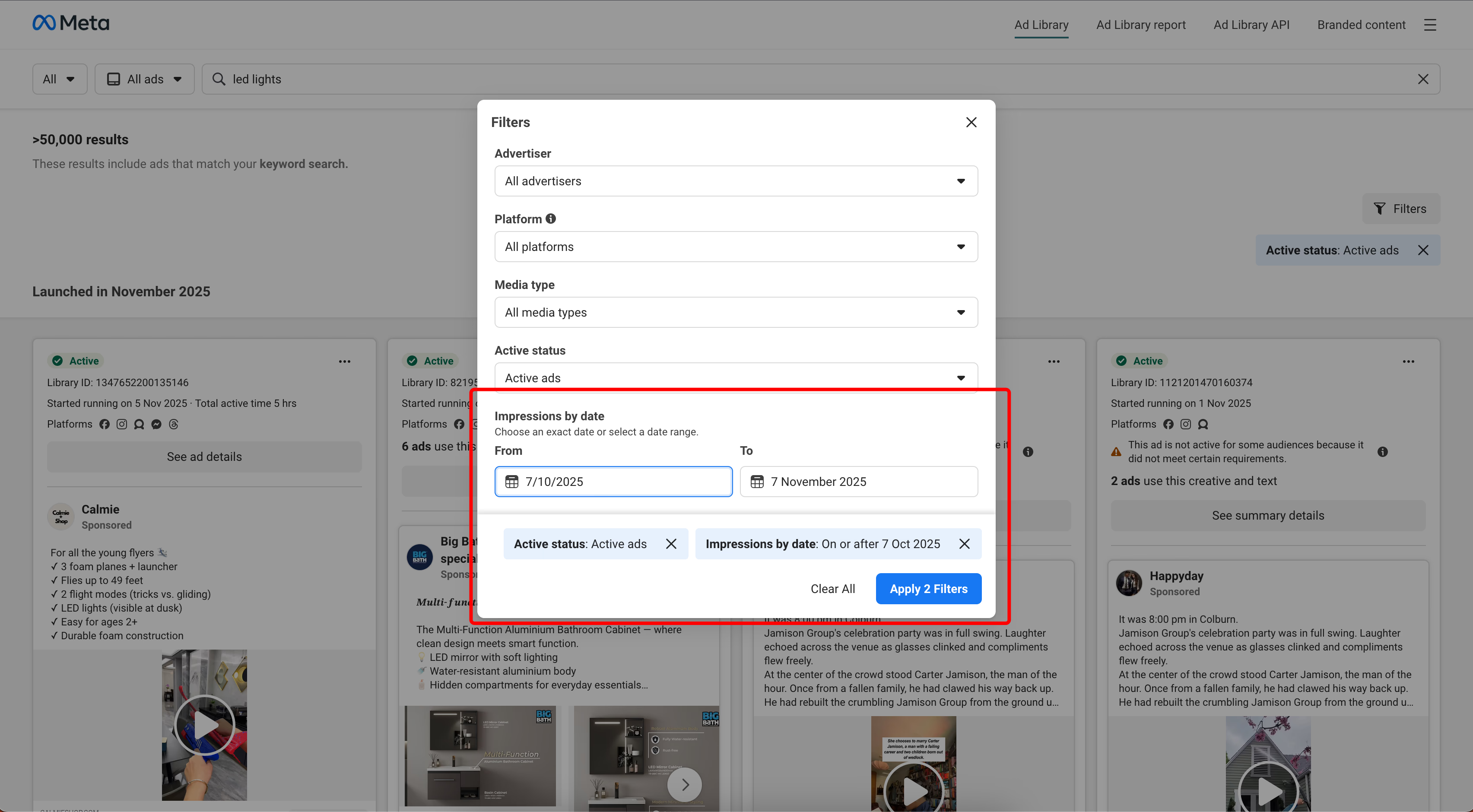
Click-through rate (CTR)
Measures hook effectiveness. For cold traffic, over 1.5% CTR means your creative and copy resonate. Sephora improved CTR by 41% by optimizing the first three seconds and showing multiple products quickly.
CTR reveals whether your ad interrupts the scroll successfully. It's the bridge between impression and action. f users don't click, nothing else matters.
Low CTR means your hook failed or your targeting missed. High CTR with low conversions means your landing page or offer is the problem, not your creative. Isolate the weak link before making changes.
Calculating CTR is actually simple. Just use this formula: CTR = (Clicks / Impressions) × 100
Return on ad spend (ROAS)
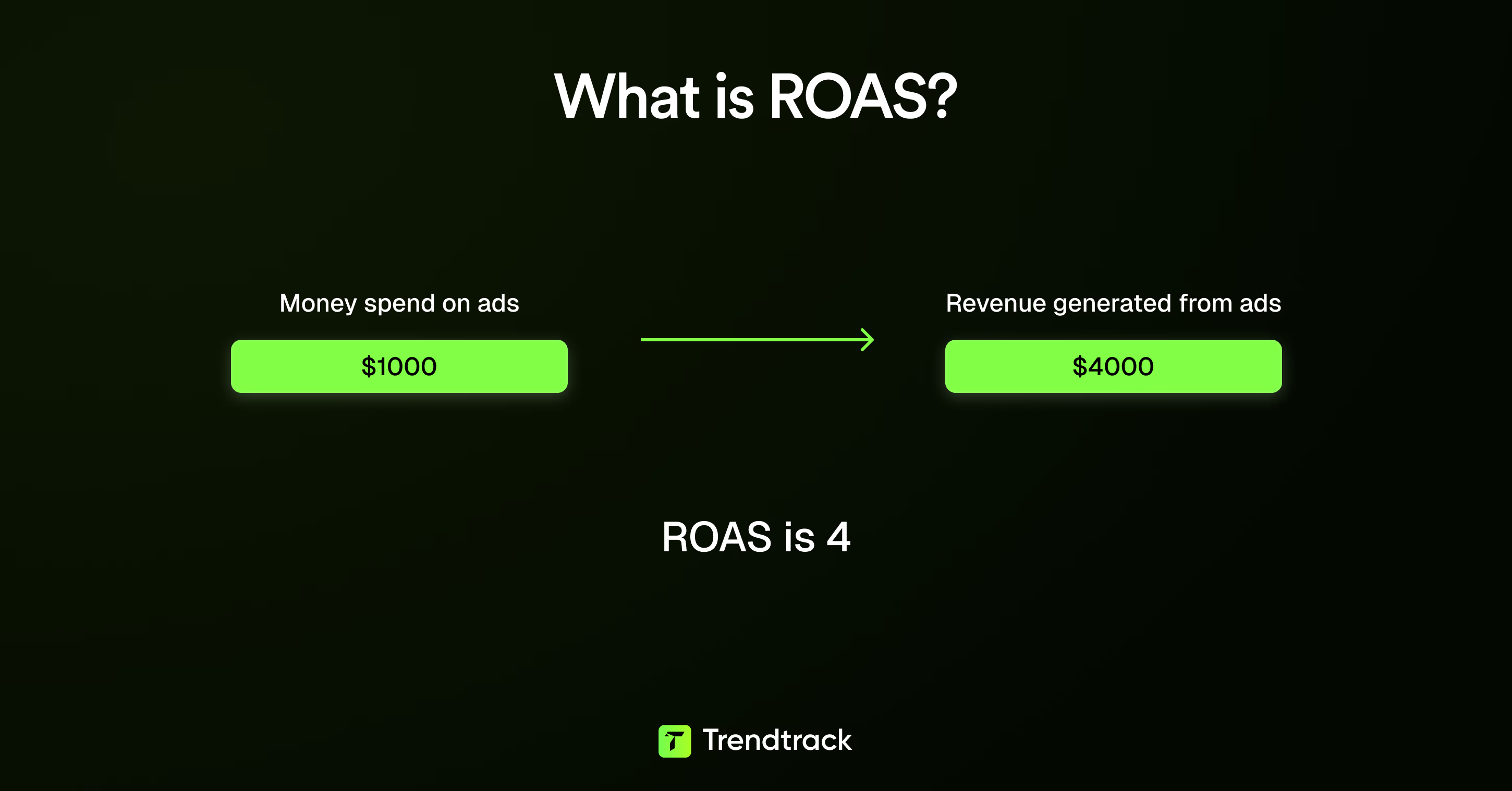
The ultimate measure. A 2x ROAS means $2 back for every $1 spent. Top ecommerce brands aim for 3–4x on cold traffic and 5–8x on retargeting. Double Good Virtual Fundraising boosted conversions 62% and cut CPA 39%, multiplying ROAS by targeting micro-audiences.
ROAS tells you if your advertising is actually profitable. Everything else is just a directional signal; ROAS is the scoreboard.
ROAS targets by funnel stage:
- Cold prospecting: 2–4x (customer acquisition)
- Warm audiences: 4–6x (interest validation)
- Retargeting: 5–10x (conversion optimization)
- VIP/repeat buyers: 8–15x (retention marketing)
- Engagement depth — Comments, shares, and meaningful interactions help the algorithm. Ads that ask questions or start conversations get more shares and discussions.
- Creative fatigue — Watch frequency and CTR. When frequency exceeds 3–4 impressions per user and CTR falls, refresh creative or try new angles.
Blended ROAS matters more than campaign-level ROAS. However, when taking into account customers who return for repeat purchases over a longer period, the true ROAS can be significantly higher. It can reach 4x or more. This reflects the full lifetime value influenced by the ad.
Use a ROAS break-even calculator to determine the minimum return you need based on your margins and ad spend.
You can use all of these metrics to distinguish ads that look good from ads that truly scale.
Platform updates and specs you need to know
Several platform changes can impact your campaigns.
Transparency and regulations
New EU rules in late 2025 increased disclosure labels, sponsor names, and consent for European audiences. Political and social issue ads face archiving and foreign spend blocks. This raises baseline skepticism for commercial ads, so your creative must build trust quickly.
Video optimization
Facebook adjusts placement automatically. But uploading custom ratios yields better results. 4:5 for Feed, 16:9 for In-Stream, and 9:16 for Stories. Captioned videos increase view time by about 12%. Since 41% of videos lose meaning without sound, design for sound-off viewing.
Spend visibility
EU and UK markets show spend ranges, impression counts, and demographics from the Ad Library Report. Filtering for ads spending $1,000+ in the last seven days helps you reverse-engineer winners without risking your budget.
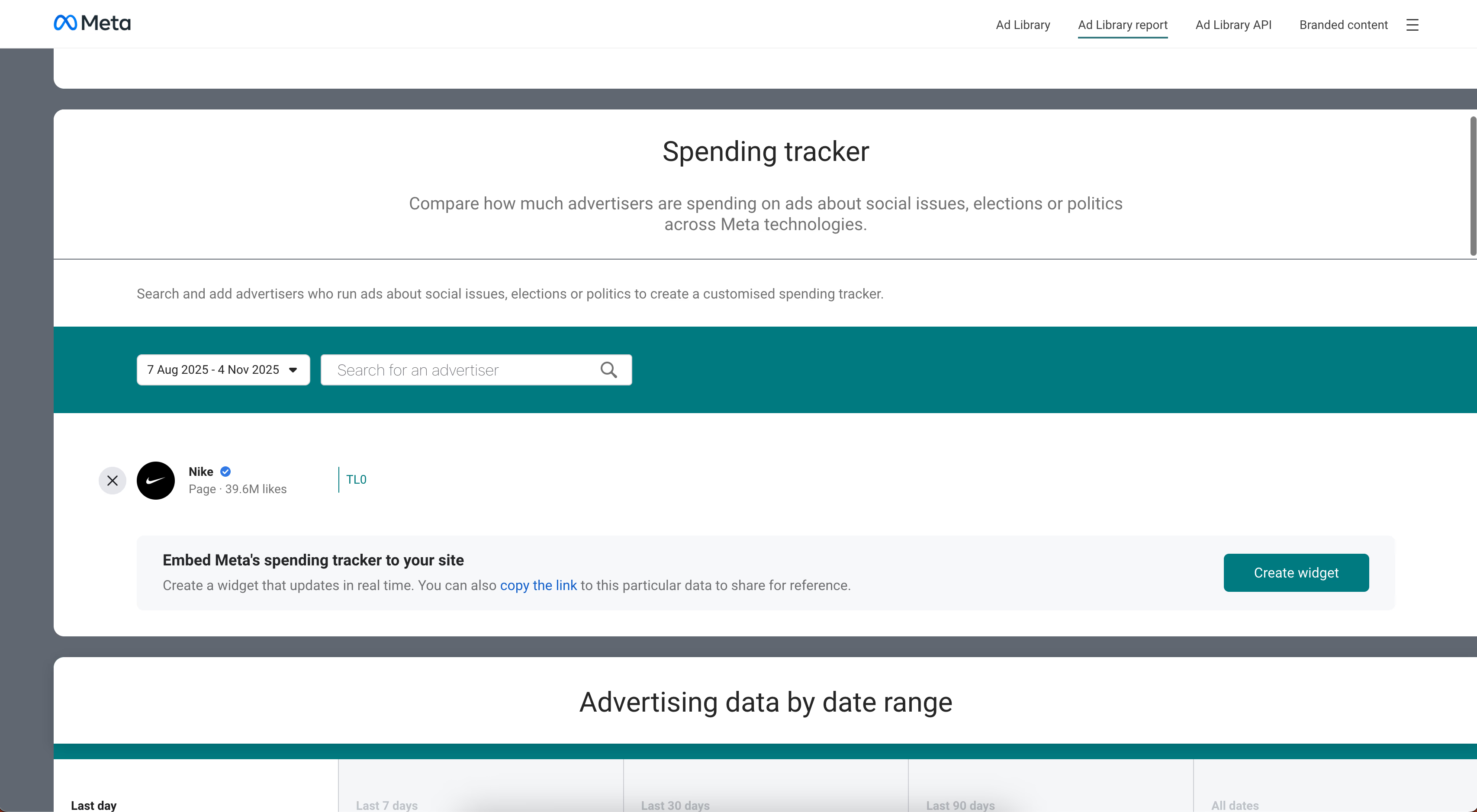
Aspect ratios and landing page speed also affect outcomes. A slow website inflates CPA no matter how good the creative strategy is.
The advantage does not come from bigger budgets alone, it comes from combining creative skill with technical precision. This lets you compete based on intelligence, not just spend.
If you do not want to deal all of this, simply use Trendtrack to track competitors ads. All in one platform.
Now let's dive into the Facebook ad examples that prove what works.
20 Working Facebook Ads Examples in 2025
From handcrafted exhausts to viral sleep products, these are the real Facebook ads converting right now. Each one shows a different angle. UGC-driven storytelling, clean product demos, or offer-first creative.
However, all share the same DNA. Native visuals, human delivery, and fast message clarity. Here’s what each brand is doing, and why it’s working.
- Hitchcox Motorcycle
Runs handcrafted exhaust ads for bikes. The visuals show custom parts and British-made quality, clear niche targeting. Works because it’s specific and passion-driven, appealing directly to motorcyclists who value craftsmanship.
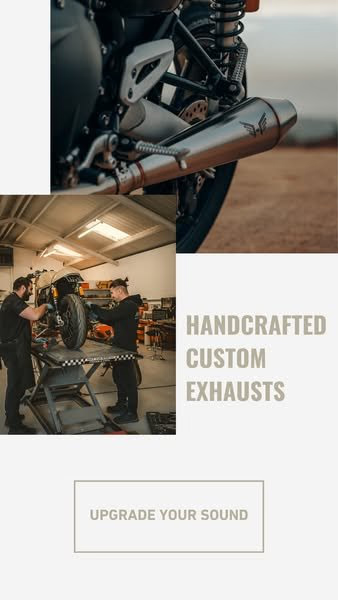
- Ditur
High-end watch visuals with luxury positioning (“Milani Signature”). Elegant, minimal creative built on product close-ups. Works through aspiration and visual appeal, a strong fit for feed browsing.
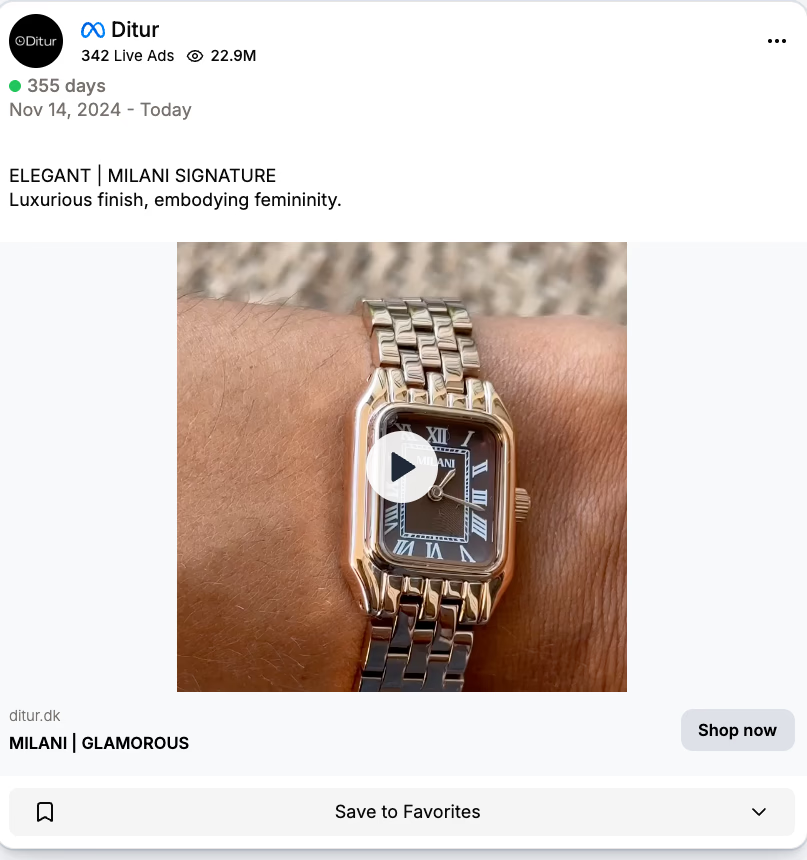
- Callie Gifts
UGC video showing personalized staplers being unboxed. Bright colors and giftable products make it instantly relatable. Works because it feels handmade and personal — perfect for social sharing.
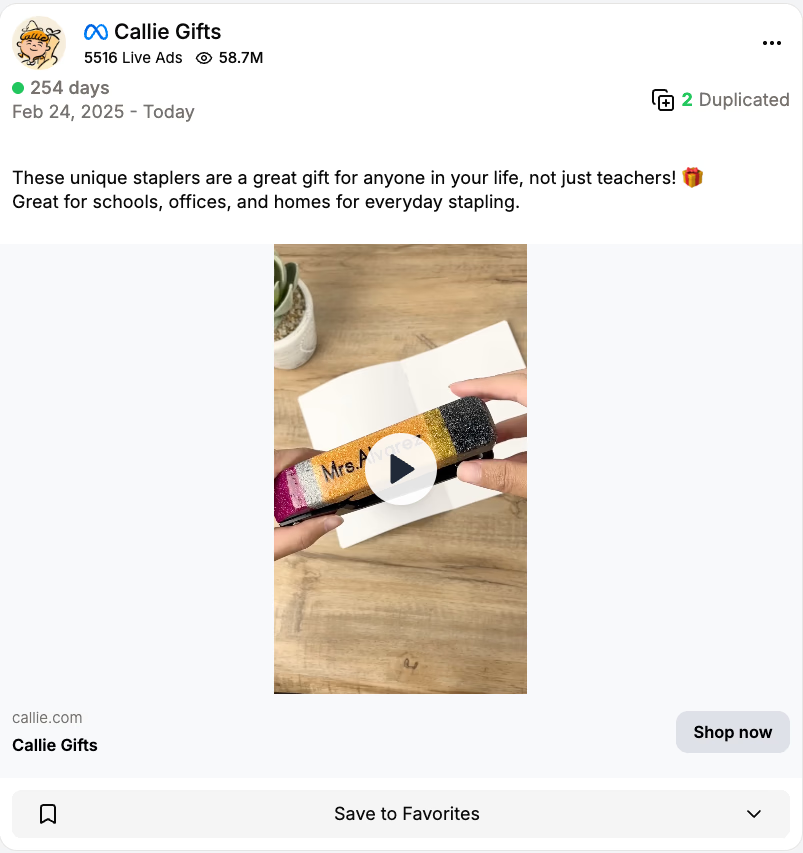
- GRIZLY.cz
Seasonal creative (“Night Shopping”) showing snacks and discounts. Feels like a straightforward retail sale push. Likely performs on volume and clear offer visibility.
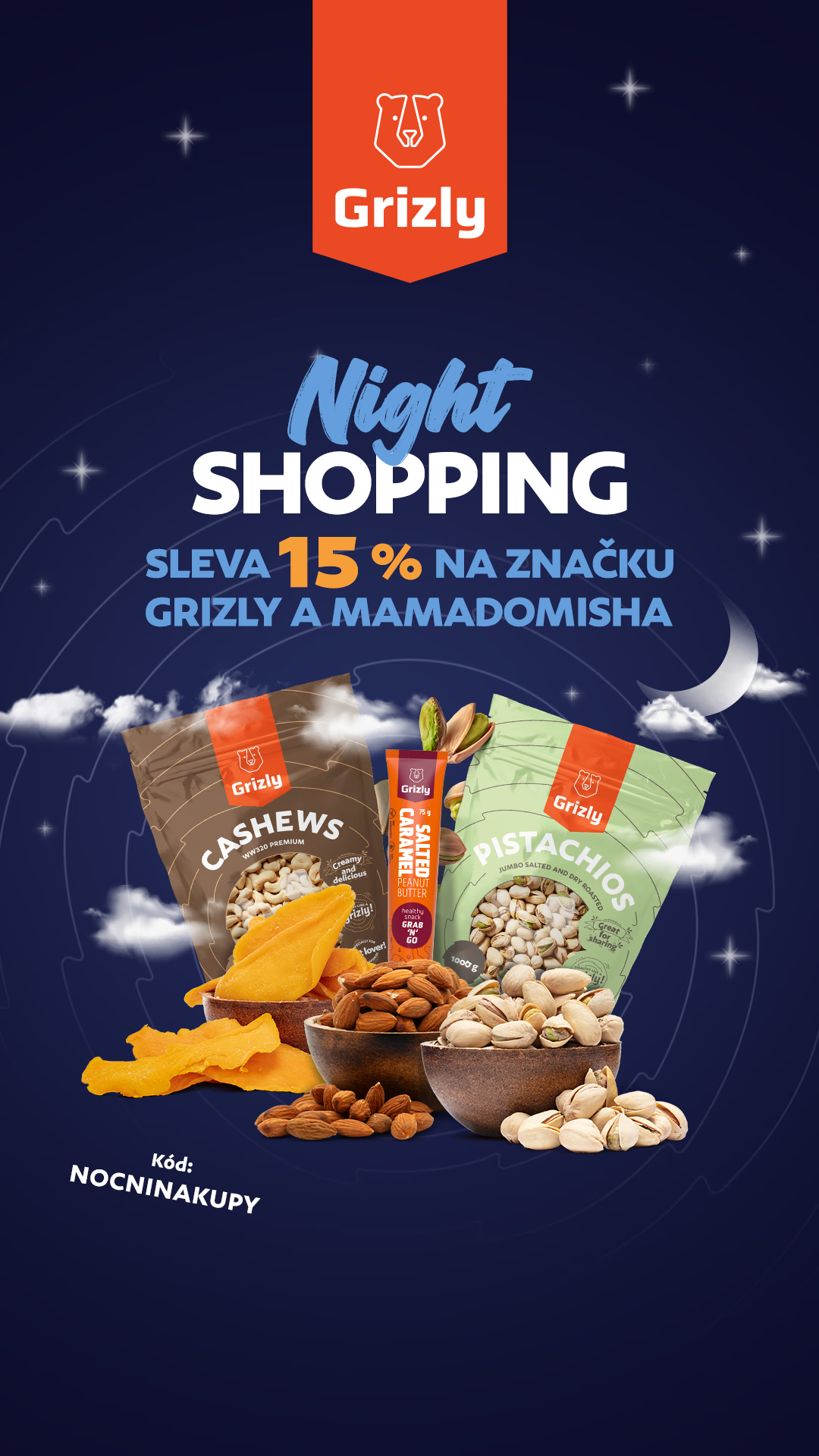
- World Race Circuits
Visuals of racetrack-shaped wall art. Product demo ad, precise, scaled designs appeal to enthusiasts. Works because the niche is crystal clear and the product instantly understandable.
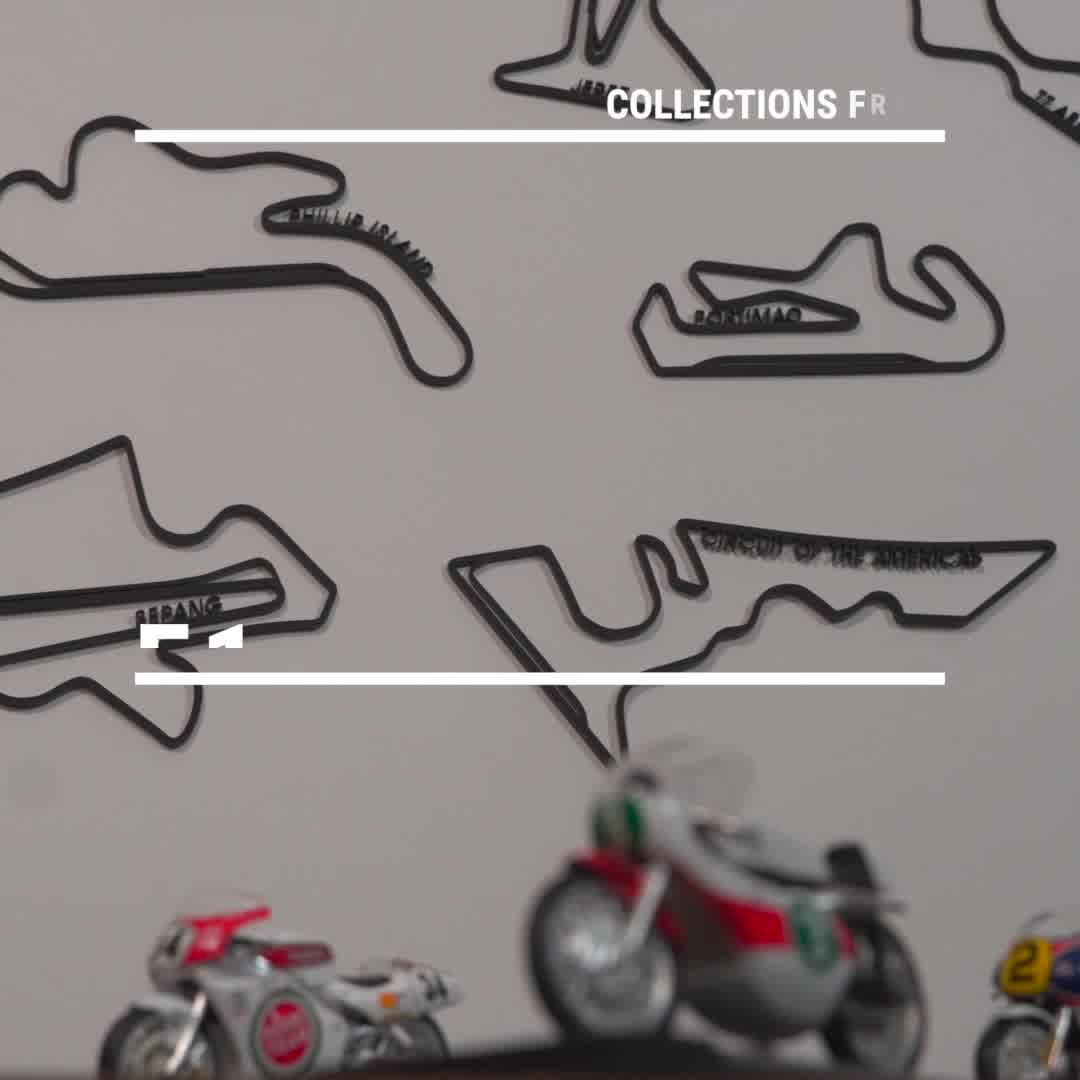
- Blissy
Image-based beauty ad showing a model with perfect hair. Copy promotes a “37 Haircuts Guide.” Feels like content marketing disguised as product discovery. Informative angle drives clicks.
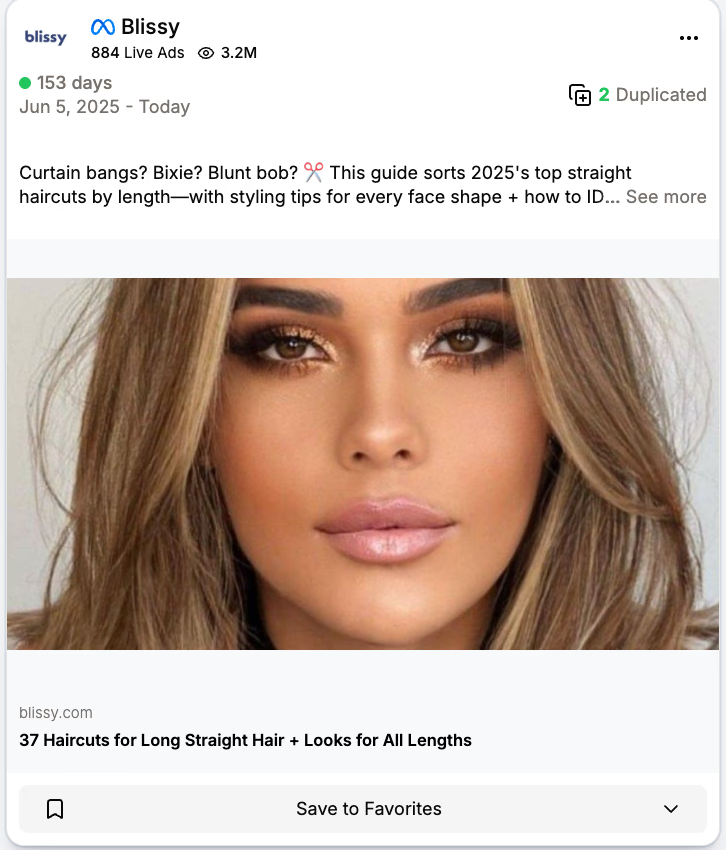
- Camierly
Video showing Halloween décor (3D LED bats). Simple, UGC-style presentation. Works because it ties into an upcoming holiday and shows the product in action.
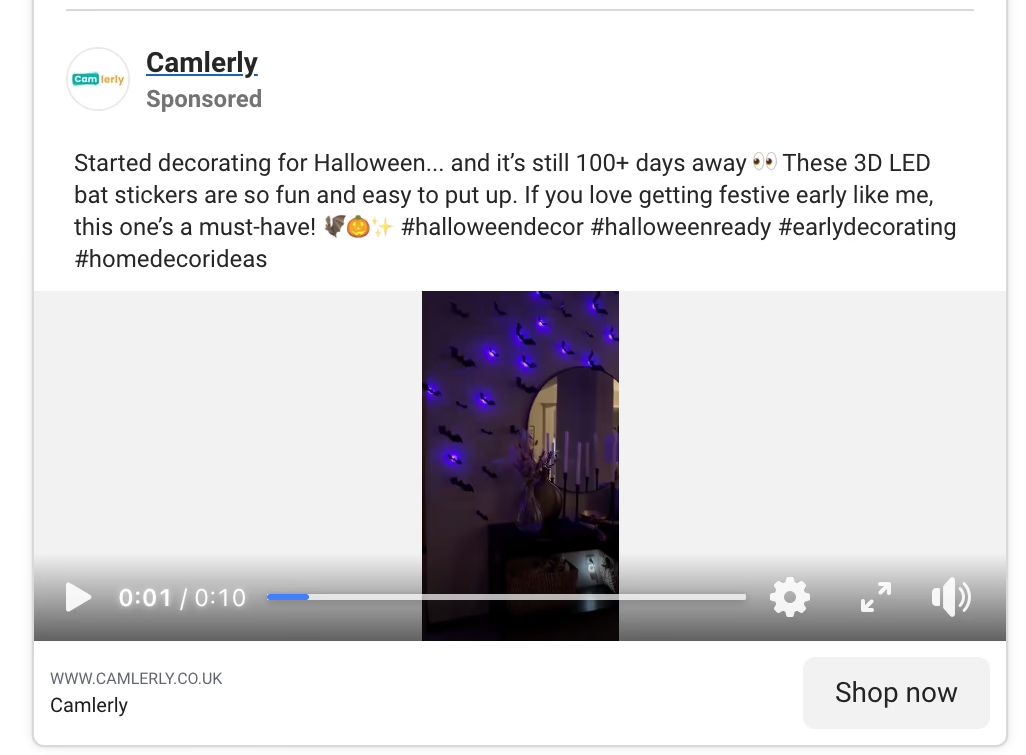
- Vitality Extracts Esse
Photo ad featuring “Skin Envy” serum in its box. Text is conversational (“I’ve been eyeing this for a while”). Works as testimonial-style UGC — trust built through relatability.

- LuminoTeeth
UGC video with a person using the whitening product on camera. Real-person demo. Performs because it’s practical, believable, and demonstrates outcome directly.
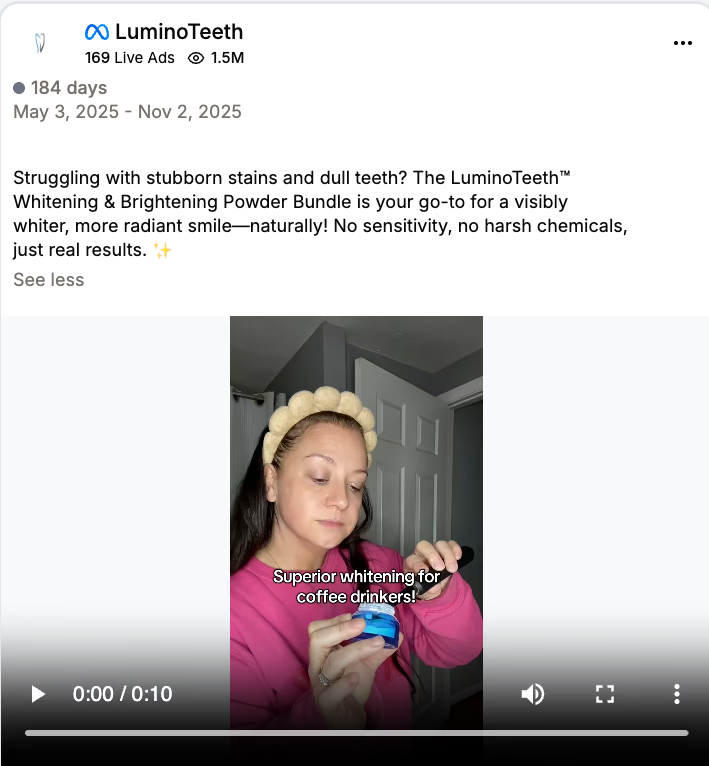
- Tapestrymarket UK
Bright, fantasy-style artwork promoting cross-stitch kits. Emphasizes craft and sale (“Buy 4 Get 1 Free”). Works because it’s visually distinct and targets hobbyist communities.
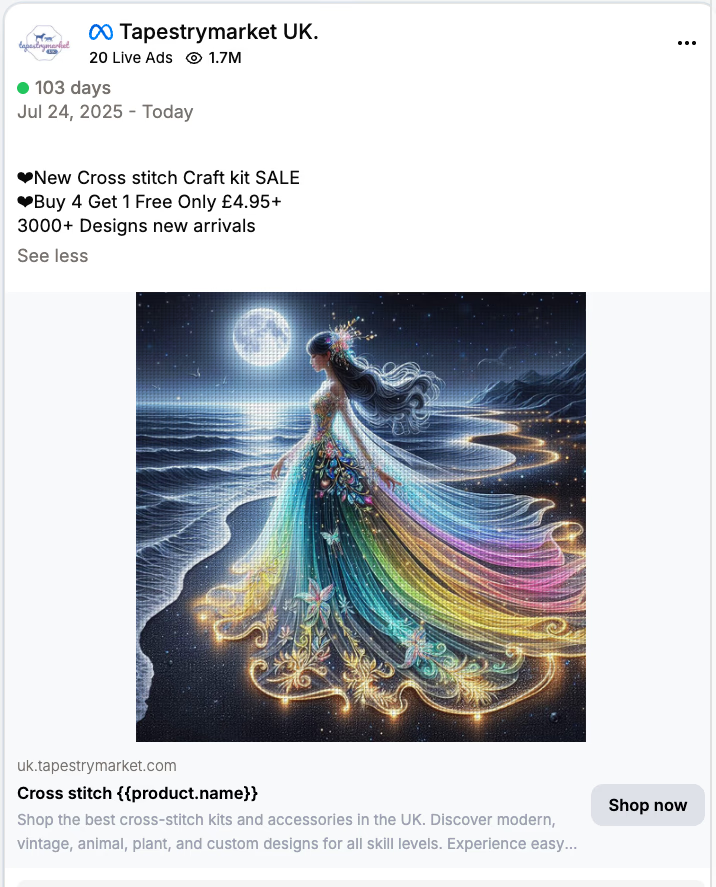
- Saltyface
Aesthetic photo of makeup product on a person’s leg. Clean, minimal, brand-first visual. Works for its lifestyle editorial tone, natural, effortless branding.
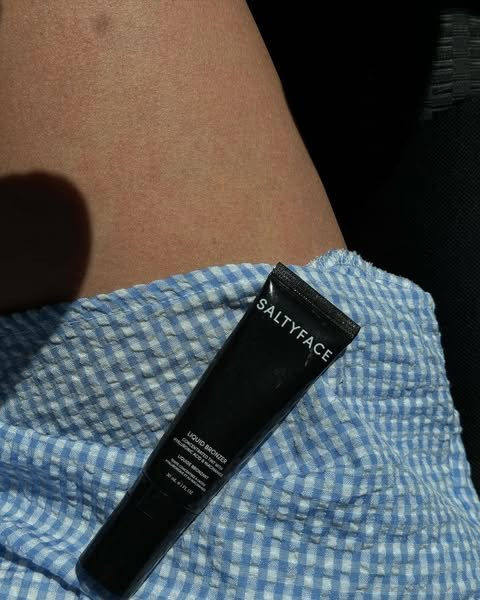
- VRAI
Video showing cityscape scenes. Likely jewelry or accessory content. Works due to aesthetic focus and cinematic storytelling.
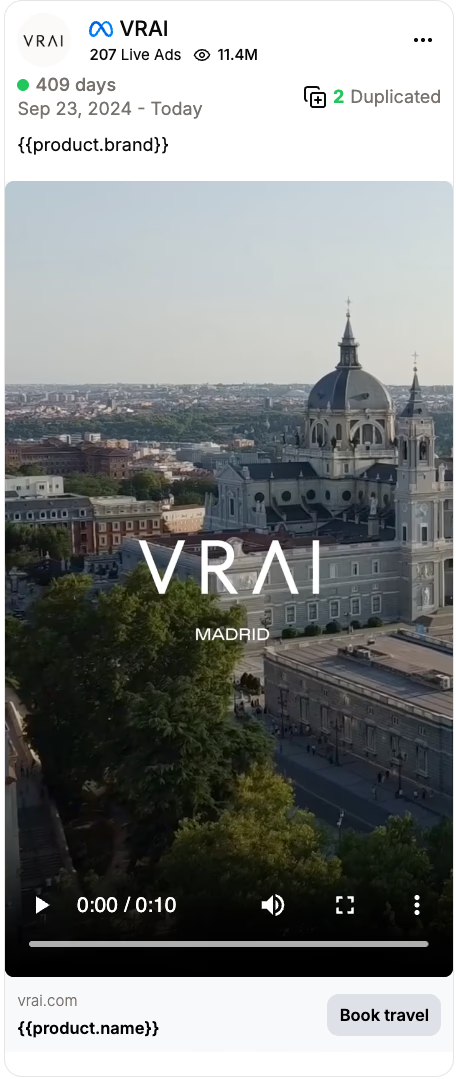
- GroundingWell
Split-screen UGC showing “ungrounded” vs “grounded.” Straightforward, results-based creative. Works because it simplifies the product’s benefit visually — quick comprehension.
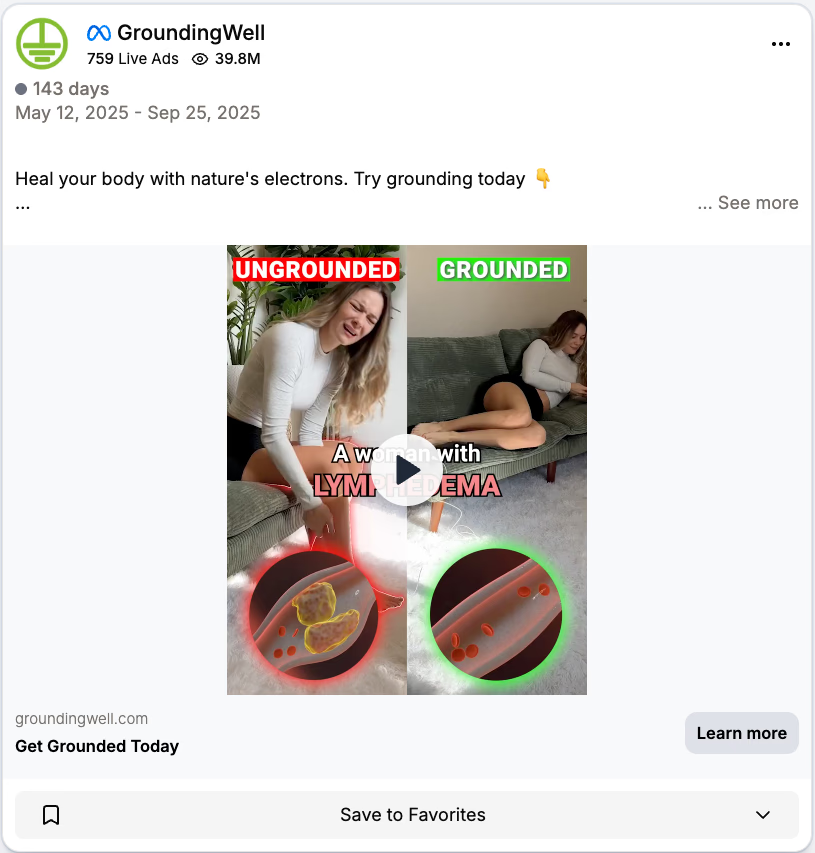
- Concept Global
Video showing a person walking with a sling bag. Urban, practical positioning. Works through demonstration and relatability — clear utility shown in context.
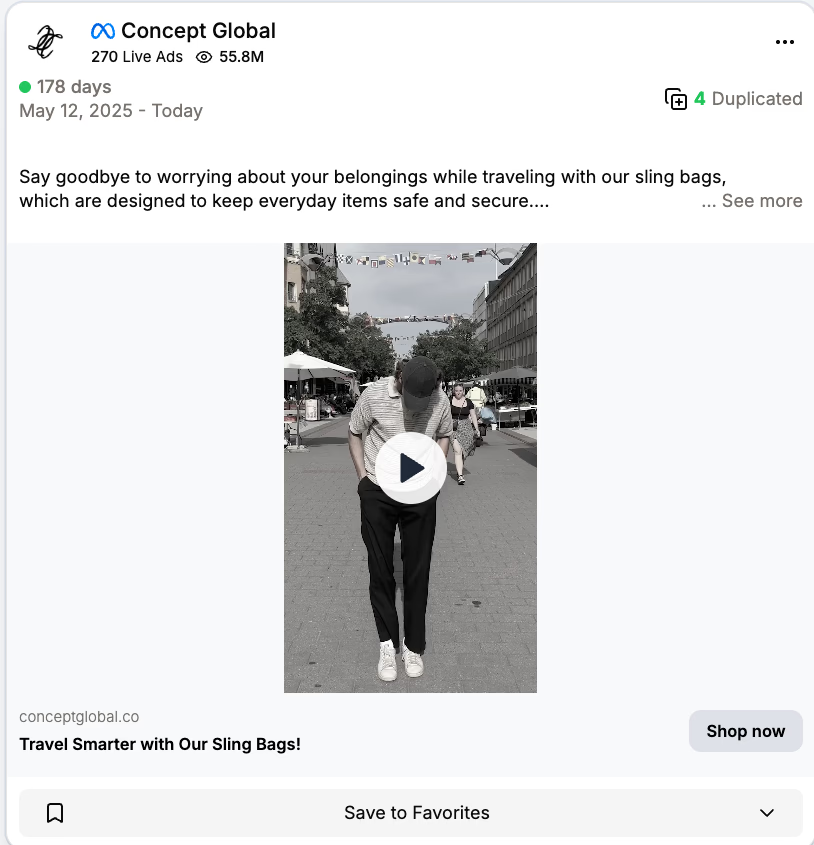
- REDCON1
Lifestyle video showing people drinking energy drinks outdoors. High-energy, aspirational vibe. Works because it’s lifestyle-driven, not just product-focused.
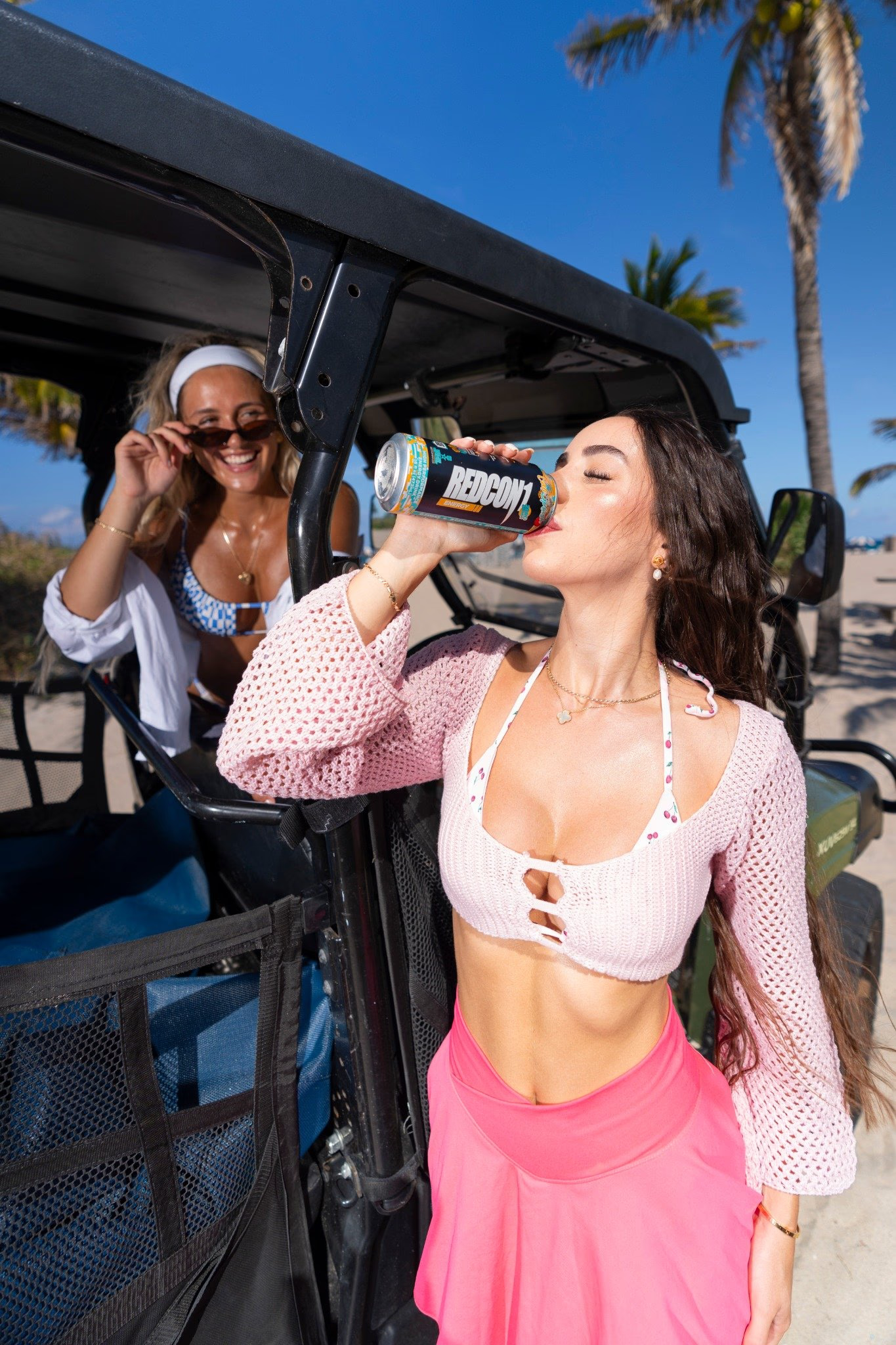
- Lisa Angel
Clean product photo, smiling woman, tagline about gifting. Relatable lifestyle tone. Works as emotional utility, visualizing joy through gifting moments.
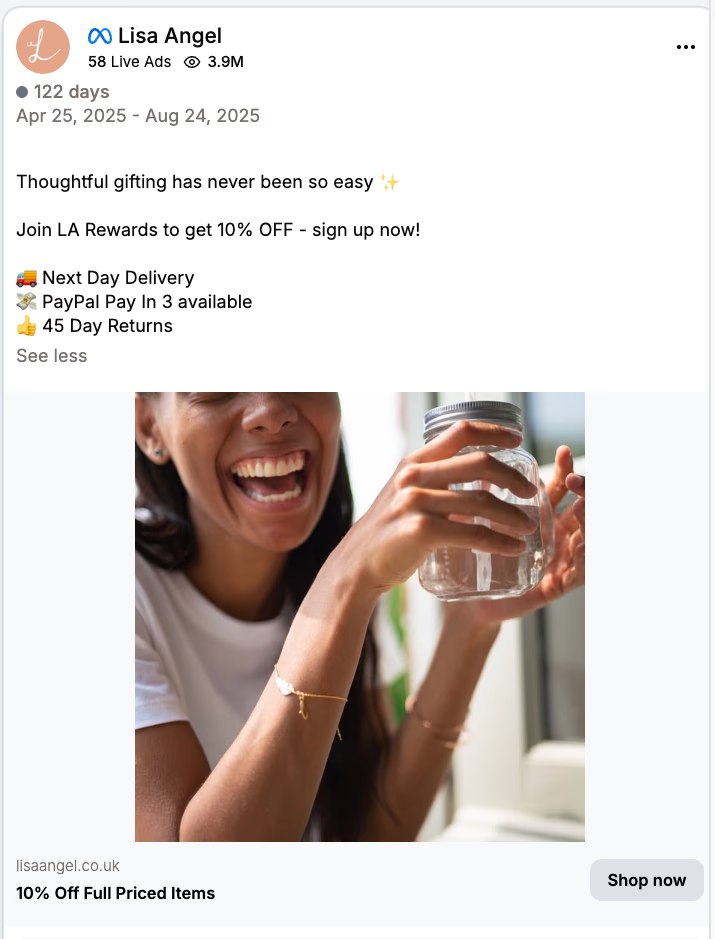
- VIVAIA
Static ad for footwear, featuring “Eras Tour” mention. Trend-driven creative using cultural timing. Works because it aligns with fandom energy and current events.

- Anne’s Skincare Blog
Photo of tins and “SOLD OUT” headline. Strong social proof. Works because it implies virality and community endorsement, scarcity psychology.
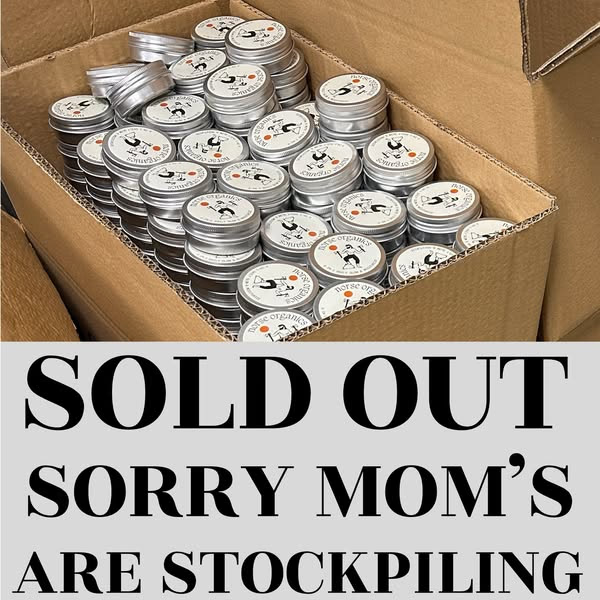
- Made-in-China.com
Industrial equipment image with informational tone. B2B appeal, product clarity and professionalism. Works because it’s factual, built for procurement audiences.
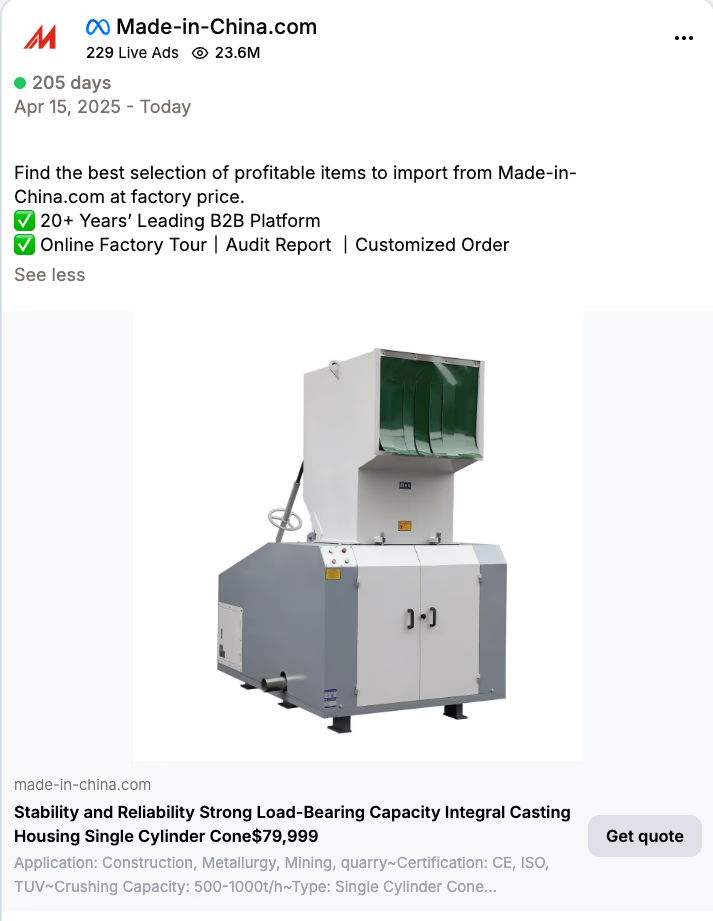
- Mashed Potato Golf
Photo of golf putter with bold copy. Straightforward product shot. Works because it’s clean, aspirational, and instantly recognizable to its niche.

Analyze High-Performing Ads
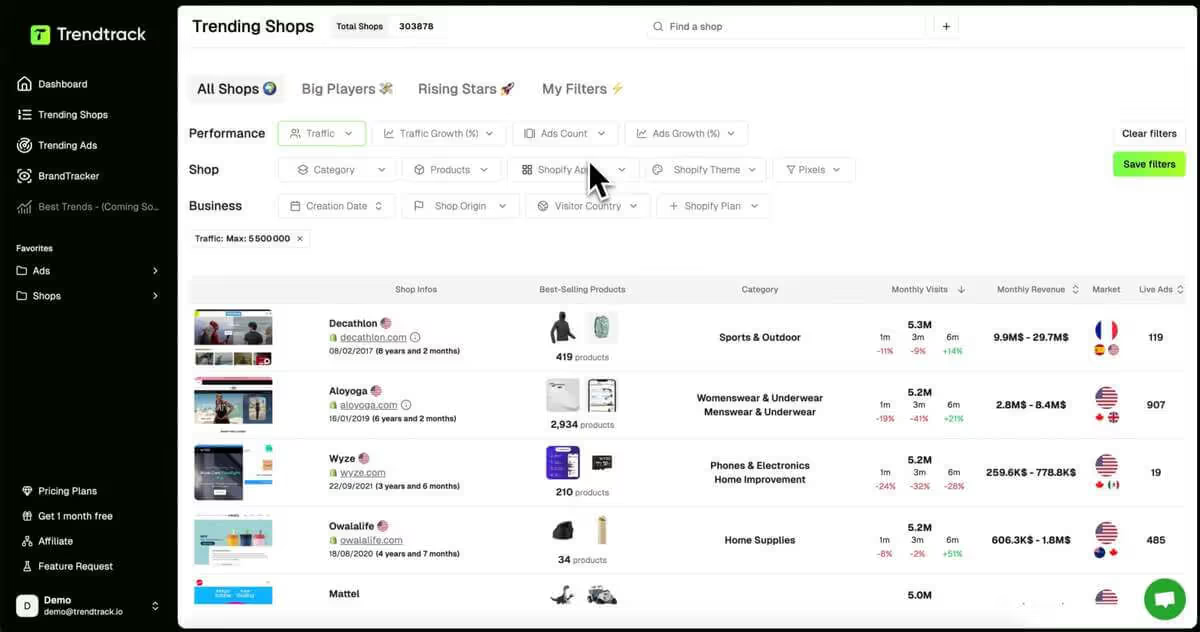
How Trendtrack reveals profitable ad strategies
Avoid spending hours scrolling through the Meta Ad Library hoping to find effective ads. Trendtrack filters and highlights ads linked to real revenue, saving you time and guesswork. It offers quick access to:
- A trending ads tab with filters for ads spending $1,000 or more in the last week, so you can spot serious tests.

- Store filters that identify shops monthly visits, connecting ads to businesses at scale.

- A Chrome extension displaying estimated revenue, monthly traffic, active ads, and the tech stack on any Shopify site.
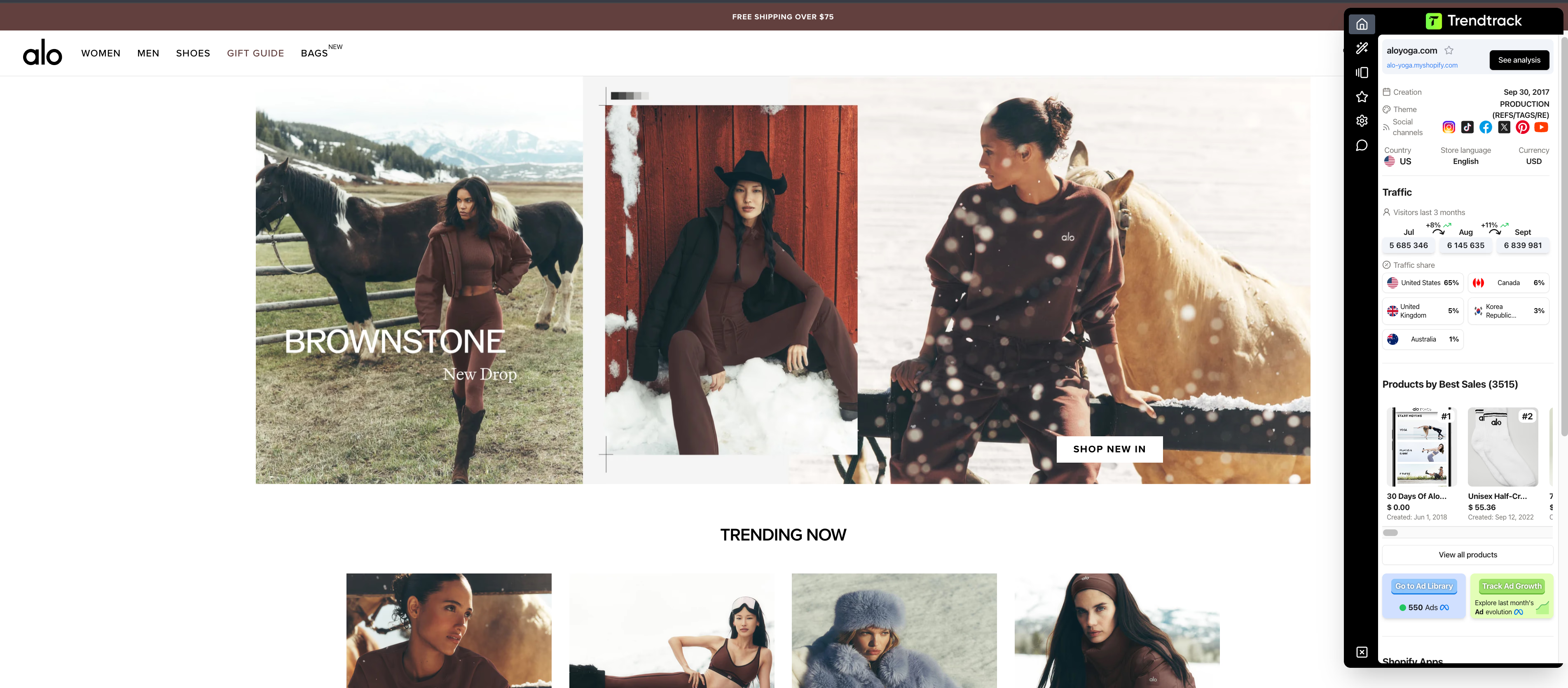
- Brandtracker timelines that show launches, pauses, creative updates, video transcripts, headline variants, and landing page views in one place.
Use these tools to convert competitor activity into actionable ad blueprints for your brand. When you see increases in both a competitor’s ad spend and store visits, you’ve found a tactic worth testing.
Track Competitor Stores
Monitor your competitors' every move. Get insights on their traffic, best-sellers, apps, and marketing strategies to stay one step ahead.

Turning competitor insights into your own winning ads
Simply watching your competitors isn’t enough. You must adapt their proven strategies and validate them quickly. Avoid guessing. Start tests backed by real data. When your adapted ad proves profitable, reverse-engineer why it worked and create a repeatable playbook.
Turn your competitors’ expensive tests into your affordable shortcuts. You don’t need to invent new strategies. Adapt what already succeeds.




Are you ready to get the insights?
From viral trends to million-dollar stores — unlock the insights behind what sells, scales, and converts. All in one place.




.avif)

